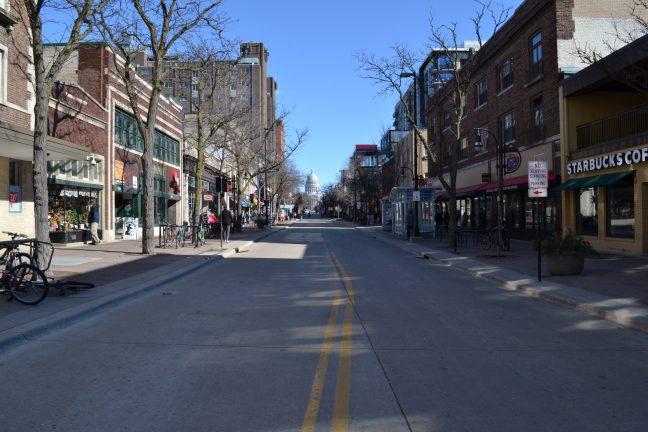The U.S. Department of Transportation’s Federal Transit Administration released a statement March 11 that $118.1 million is included in President Joe Biden’s 2025 proposed budget for the Madison area’s Bus Rapid Transit.
Phase one of this project began with the east-west line from Junction Road to East Towne through the downtown and campus area — which is expected to be officially online at the end of 2024.
The most recently announced federal funding will be dedicated to the second phase of the BRT — the Metro Rapid Route B — which will connect the north and south sides of the city, according to the City of Madison.
Greater accessibility, fewer stops and the control of traffic signals for the sake of efficiency all will be implemented for the north-south line and will ultimately strengthen Madison’s transit system, according to professor of civil and environmental engineering in the University of Wisconsin College of Engineering David Noyce.
“The BRT system is being designed for each part of the city including the South side where transit may not always be well served and providing access and mobility for people who need transit to get jobs or to get to the other parts of the city where they need to be,” Noyce said. “The city of Madison is somewhat unique for a city this size in the sense that buses are really the only mass transit that we have, so building up that network is a good decision.”
Both phases of this project use Small Starts — this refers to federal funding programs. Importantly, this funding is a capital program, which in regards to transit, emphasizes the development of buses, bus stops and roads.
This is opposed to operational programs, which focus on services such as paying the drivers, according to Leader of the State Smart Transportation Initiative at UW and member of the Transportation Commission and Plan Commission for the City of Madison Chris McCahill.
The city worked closely with the FTA to receive this grant, which required the confirmation of a locally-preferred alternative, completion of an environmental review process and the securement of local funding.
Throughout phase one of this project, the FTA rated the system in regards to ridership. Due to this reason, it was crucial the east-west line came before the north-south because it allowed for greater ridership, thus ensuring the funding for the second phase, according to McCahill. Ultimately, this grant allowed for vast improvements to the transit system.
“The main thing is they [the buses] will be bigger,” McCahill said. “They’ll be sixty foot buses, so they will be able to carry more people… [There will be] larger stations with level boarding on the buses and dedicated bus lanes. So the whole idea is that the system will be faster and more efficient so we can make better use of our resources.”
The next planning meeting aims to discuss the public’s input on the North-South BRT and it will be held virtually at 5:30 p.m. Apr. 22, according to the City of Madison.



